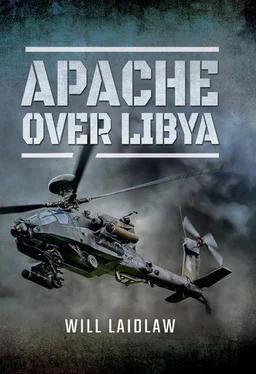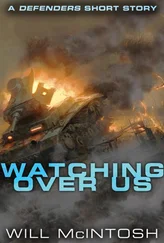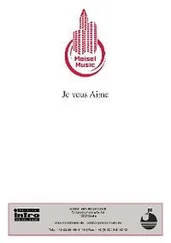History will often be unkind when finance trumps defence needs. But the fact remains – far-off places with a coast are best reached by sea. The fourth Ark Royal and her Buccaneers preserved British Honduras in 1972, and most likely saved the ship and her air capability. The South Atlantic in 1982 repeated the lesson, this time with Hermes and Invicible . Again, in the early 1990s, the fifth Ark Royal launched Harriers over Bosnia, and finally, in 2003, both Ocean and Ark Royal went to Iraq in the helicopter role. One may conclude that expeditionary maritime power, complete with soldiers, helicopters and jets, is a most versatile way of projecting defence.
But in 2010 savings had to be made, and big-ticket items had to go. We were broke. There was no more money. And when government realized they hadn’t quite saved enough, more cuts, mostly to people, followed. The recession, financial sobriety and fiscal responsibility drove thinking across all departments. The economy was the highest priority and nothing would be allowed to imperil its shoring up and recovery. Savings were made in every aspect of public finance.
Sadly, the frugal lens reached the front. Pretend men renting time on operations brought thrifty bywords with them. Emulating the parsimony of the man in ‘town’ was in fashion. I remember listening to a combat description from Afghanistan where, it was said, a passing officer commented on how expensive it was to fire Hellfire missiles. This story duly made its way around the aviation community and still gets the occasional mention when aircrew review guntape.
So, as the righteous accountant trundled off, leaving soldiers stunned, wise incredulity in mock enquiry broke the silence: ‘When a soldier calls for assistance, do I need to tap in the cost of that assistance and ask him if he can afford it? I think not…’
And they all went back to work, unchanged. The aircrew had all killed men with Hellfire, expensive Hellfire. They all continued to do so. As the tour went on and more Hellfire were used, no further mention was made of money. Perhaps it fell out of fashion.
Alas, the 2010 Strategic Defence and Security Review did not predict the Arab Spring, the last incarnation of the great Ark Royal with her air capability was cast aside and a chip was knocked out of the national deficit. Had this not happened she would probably have sailed for Libya, Harriers embarked, in 2011.
In their place, seven months later, sat Ocean and the Apache and much, much higher risk. Had nothing changed in 2010 we might still have ended up in Libya, but the blend would have been different, the options much wider, the fast jet operating costs likely to be lower and the utility of ships with strike assets embarked clearly underlined. In 2011 history’s rhythm tapped on and conflict did not acquiesce to the economy.
We briefly discussed the meaning of cost and its importance as Ocean made her way to Libya. We joked about the living conditions on board and compared the ship to a hotel more precious aviators would refuse to stay in: ‘Pilots sharing cabins! How could I possibly go to work under such circumstances? Soldiers and engineers stacked three bunks high in berths of six; surely there is a publication somewhere outlawing this!’ Then ‘where’s the swimming pool?’ brought the biggest laugh.
As for ammunition, we knew the situation on the ground was not going to mirror Helmand, and we would do a lot of firing. Engagements would not be fleeting, they were likely to be numerous, frequent and simultaneous. Our view was not complicated by economic concerns. We had hundreds of Hellfire. There were hundreds of targets. We would shoot until one or the other ran out, or until an accountant told us to stop. Until then we would keep going.
In the end we fired 99 Hellfire, 4,800 rounds of 30mm and 16 rockets on 48 sorties, striking 116 targets. The numbers of chaff and flare fired in self-defence against incoming missiles and radar lock-ons remains secret. There were plenty, and they worked. Our targets ranged from T-72 Main Battle Tanks, the ZSU 23-4, BM21s and buildings to the ubiquitous technicals. In fact, the technicals, all capable of shooting us down with their heavy calibre weapons, made up around half of our total targets. These were the main weapons of the regime, and our work against them certainly made a difference to the rebels and to Libyan civilians.
During June, July and early August NATO flew 3,194 [13] Extrapolated from the NATO daily briefing sheets found at http://www.jfcnaples.nato.int/Unified_Protector/page1915311.aspx
strike sorties, [14] Strike sorties are intended to identify and engage appropriate targets, but do not necessarily deploy munitions each time
of which we flew 48, just 1.5 per cent of the whole NATO operation! [15] The UK flew a total of 2,100 strike sorties during the entire campaign, with our 48 contributing 2.3 per cent
Total targets struck by the UK over the same period are not available, but the total from 31 March to 31 October was around 640, [16] UK Ministry of Defence website https://www.gov.uk/government/news/deputy-pm-welcomes-home-uk-forces-from-libya-campaign published 3 November 2011
of which we struck 116, or 18 per cent. If we spread those 640 UK targets evenly across the full seven months approximately 92 were hit each month. The Apache flew for 2.25 months, during which 206 targets were likely to have been engaged, making our 116 targets 56 per cent of the UK effort while we participated. Just numbers, that’s all.
If there is any value in this potted maths exercise it is that we flew little, fought a lot and, as you will note if you have read the preceding chapters of this story, got stuck into some vicious fights and got away with our lives. The taxpayer, even the critic, might conclude that this represented value for money!
By deploying seaborne helicopters, both British and French, NATO forced Gaddafi to picket the coast, all 900 miles of it, with scouts and MANPAD teams. This tied up a lot of his might and must have had a degrading psychological effect on those soldiers who spent weeks and months dug in, looking out to sea. After the first few missions, when these defences were tested and breached, the coastal scouts must have suffered from very low morale. The menace of the helicopter, its low-level loiter, the thunder of the blades and the almost personal message its munitions deliver were unique in the campaign. No other asset could have the same psychological impact, but it brought risk with it. The delicate risk-versus-reward estimate for every mission had to be captured, assessed and signed up to by the big hitters on Ocean and in the CAOC. It was their responsibility to see us safely through – but it was our place to deliver the plan.
All that was behind us now. We had made the journey from experimental exercise to surprise newcomer in a very hostile warzone. Ocean and her sailors had carried us, launched us and welcomed us back. They’d tolerated our mistakes, left the bar open and let us sleep when we needed to. The ship had been our protector and comfort and she kept us going when the world beyond the horizon seemed an awfully bleak and threatening place.
So our work was done. After that final unlaunched deck alert on 21 August we folded away the aircraft, signed in our morphine, Sig Saur pistols, Carbines and ammunition, signed ‘not flown’ again on the authorization booklet and went to the wardroom. Mark and John were invited in and we emptied the fridge of warm Carling while Sky’s Alex Crawford followed the FLF into Tripoli on the telly. Those fighters who had watched Nick and his team strike in the Nafusa mountains just two weeks before had rattled through Zuwara, Sabratah and Az-Zawiyah on the way. There were no more front lines, the civil war had turned completely in favour of the uprising and the regime was in terminal decline.
Читать дальше












